Last weekend we went to the local parade, made homemade sauerkraut and enjoyed some general lounging around together.
Nate and I were both able to take off four days in a row and spend real quality time with the family.

We live in a rural area on the outskirts of San Diego, and farming is a big deal here. The show animals are truly impressive.

Cowboy hats are a must.
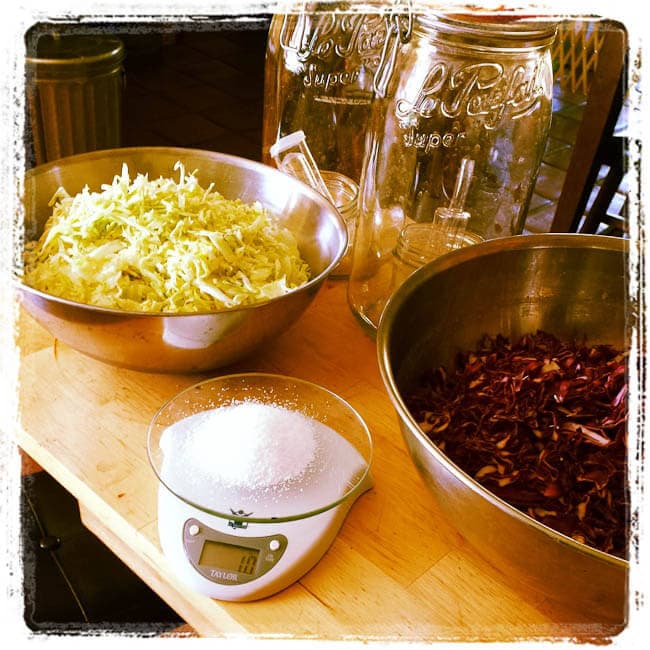
And, yes, we take advantage of long weekends at home to make homemade sauerkraut!

We had a lot of people asking us about the homemade sauerkraut. It is oh-so-good! We only started making it ourselves recently, but now it's an absolute must for barbecued hot dogs. Holiday weekends aren't complete without firing up the grill, and a hot dog isn't complete without the condiments. We're all about kosher buns, relish, sauces and hot dogs. That's just how we roll.
Homemade Sauerkraut

We only started making homemade sauerkraut recently, but now it's an absolute must for barbecued hot dogs.
Ingredients
- 3 pounds cabbage
- 1 oz pure salt, equal to 3 Tbsp Diamond Crystal Kosher salt
- Non-chlorinated water
- Olive oil, optional
Instructions
- Shred cabbage.
- Mix with salt and let sit 30 minutes.
- Mash really well with a potato masher.
- Fill sealable jar with cabbage and add non-chlorinated water until all cabbage is submerged by an inch.
- Weight cabbage down with extra cabbage leaves and a small jar filled with non-chlorinated water.
- If using a specialized fermenting jar, fill the airlock with non-chlorinated water and seal. If using a regular canning jar, top water with a thin layer of olive oil to keep oxygen from penetrating into the cabbage, and seal tightly. You can later remove the olive oil with a turkey baster.
- Let sit in a warm, dark area for 3-4 weeks.
Nutrition Information:
Yield:
12Serving Size:
1 servingAmount Per Serving: Calories: 37Total Fat: 1gSaturated Fat: 0gTrans Fat: 0gUnsaturated Fat: 1gCholesterol: 0mgSodium: 2670mgCarbohydrates: 7gFiber: 2gSugar: 3gProtein: 1g
How to make Homemade Sauerkraut
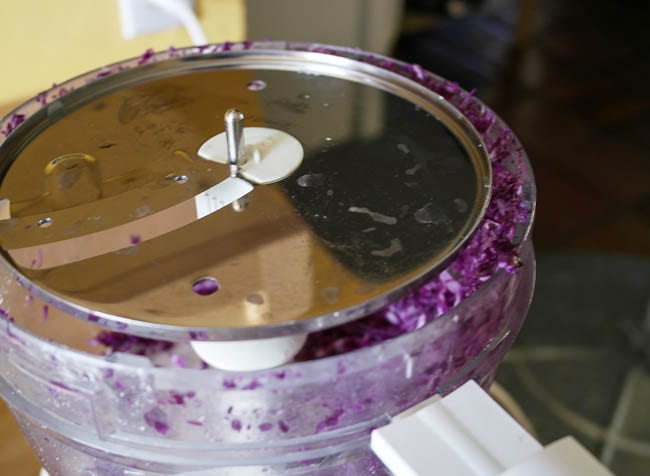
Slice cabbage with your food processor's thin slicer. You can also do it by hand, but it takes a loooong time.
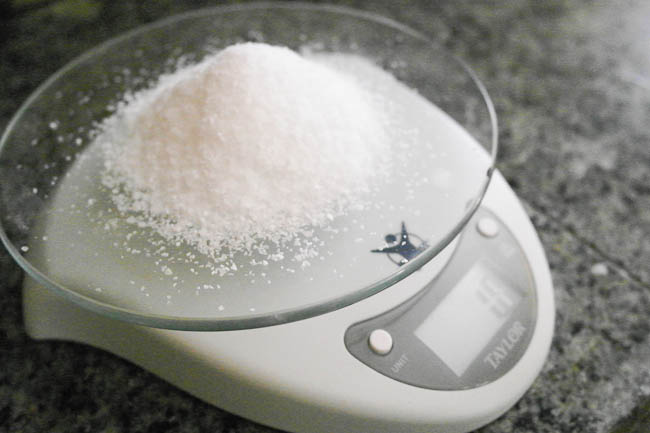
Toss cabbage with 1 ounce of pure salt with no anti-clumping fillers or iodide added. It's important to go by weight for your salt, since some salt is chunky and some is ground extra-fine, resulting in a MUCH saltier taste by volume. If you use my favorite, Diamond Crystal Kosher salt, 1 ounce is 3 Tbsp. See? I did the grunt work for you. You're welcome.

Let the cabbage and salt rest for about 30 minutes to draw liquid out of the mixture, then mash aggressively with a potato masher. Seriously. This is my new therapy. Making homemade sauerkraut a whole lot cheaper than going to see my psychiatrist.
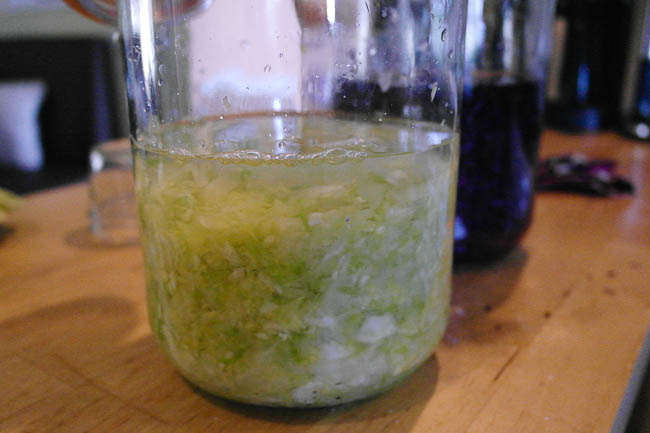
Squish the cabbage down into clean half gallon canning jars or specialized fermentation jars and add non-chlorinated water until all the cabbage is submerged. I used fermentation jars I got from a canning specialist up in Los Angeles, which I am absolutely smitten with. These things are worth their weight in gold.
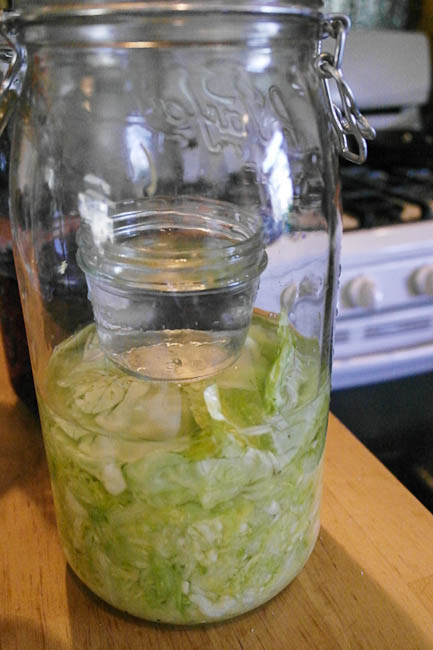
Little bits of cabbage will try to float up. Weight it all down with some extra cabbage leaves and a smaller jar filled with non-chlorinated water (a really clean rock will also suffice). Add more water until all the cabbage pieces (including the extra leaves) are submerged by about an inch. If you're using a regular canning jar, pour melted coconut oil or olive oil over the water to ensure that oxygen doesn't reach the vegetables. If you're using a fermentation jar, fill the airlock halfway with non-chlorinated water.
Seal your homemade sauerkraut and place in a dark, warm area (mine sits on top of my refrigerator) for 3-4 weeks. Check every few days and add extra non-chlorinated water if it evaporates to the point that the cabbage is sticking out of the brine. The mixture will foam up a little – that's normal. No weird bacteria splotches should form with either of these methods, but you can just scoop them off if you happen to see cultures form. If it doesn't taste sour enough when you open it, let it ferment longer and the taste will get stronger. Then you can simply transfer your homemade sauerkraut to a jar in the refrigerator. It'll keep for about 6 months…not that homemade sauerkraut EVER lasts that long around here! I recommend making your first batch without added spices (I'm a purist), but if you want to play around with flavoring you can add up to a tablespoon of juniper berries, caraway seeds or celery seeds. Don't use ground spices, as this will make your sauerkraut turn off-colored.
Have you ever made homemade sauerkraut?
Never knew how to make my own sauerkraut, so thanks for shaing! Sounds like a fun time, and I love all the pictures you shared!!
The sense of accomplishment you get after making good homemade sauerkraut is awesome.
I think it’s fabulous that you know how to make your own. I’ll bet it tastes amazing, especially on Hebrew National dogs!
That homemade sauerkraut looks delicious! I love the pictures, seems like you guys live in a very scenic town!
It is SO gorgeous here. San Diego is an amazing place to live, and the outskirts offer the best of both worlds: the city nearby and the scenic countryside.